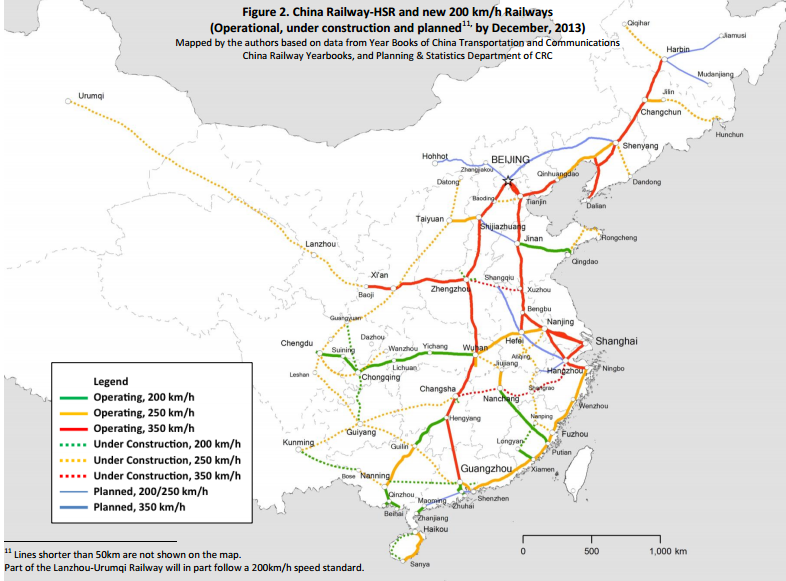By the end of 2013, China had built a high speed rail[1] network of over 10,000 route-km, far exceeding that in any other country and larger than the network in the entire European Union. It has been accomplished at a cost which is at most two-thirds of that in other countries.
According to a World Bank paper titled High-Speed Railways in China: A Look at Construction Costs, several factors influence the cost of a high speed rail project construction. The major factors include the line design speed, topography along the alignment, weather conditions, land acquisition costs, use of viaducts instead of embankments, the construction of major bridges across wide rivers, and the construction of mega stations.
Laying track on viaducts is often preferred in China to minimize resettlement and the use of fertile land as well as to reduce environmental impacts. The estimated cost of viaducts in China ranges from RMB 57 to 73 m/km for a double track line. Such costs are kept low through standardization of the design and manufacturing process for casting and laying bridge beams on viaducts.
Read more »![]()
According to a World Bank paper titled High-Speed Railways in China: A Look at Construction Costs, several factors influence the cost of a high speed rail project construction. The major factors include the line design speed, topography along the alignment, weather conditions, land acquisition costs, use of viaducts instead of embankments, the construction of major bridges across wide rivers, and the construction of mega stations.
Laying track on viaducts is often preferred in China to minimize resettlement and the use of fertile land as well as to reduce environmental impacts. The estimated cost of viaducts in China ranges from RMB 57 to 73 m/km for a double track line. Such costs are kept low through standardization of the design and manufacturing process for casting and laying bridge beams on viaducts.
Read more »
